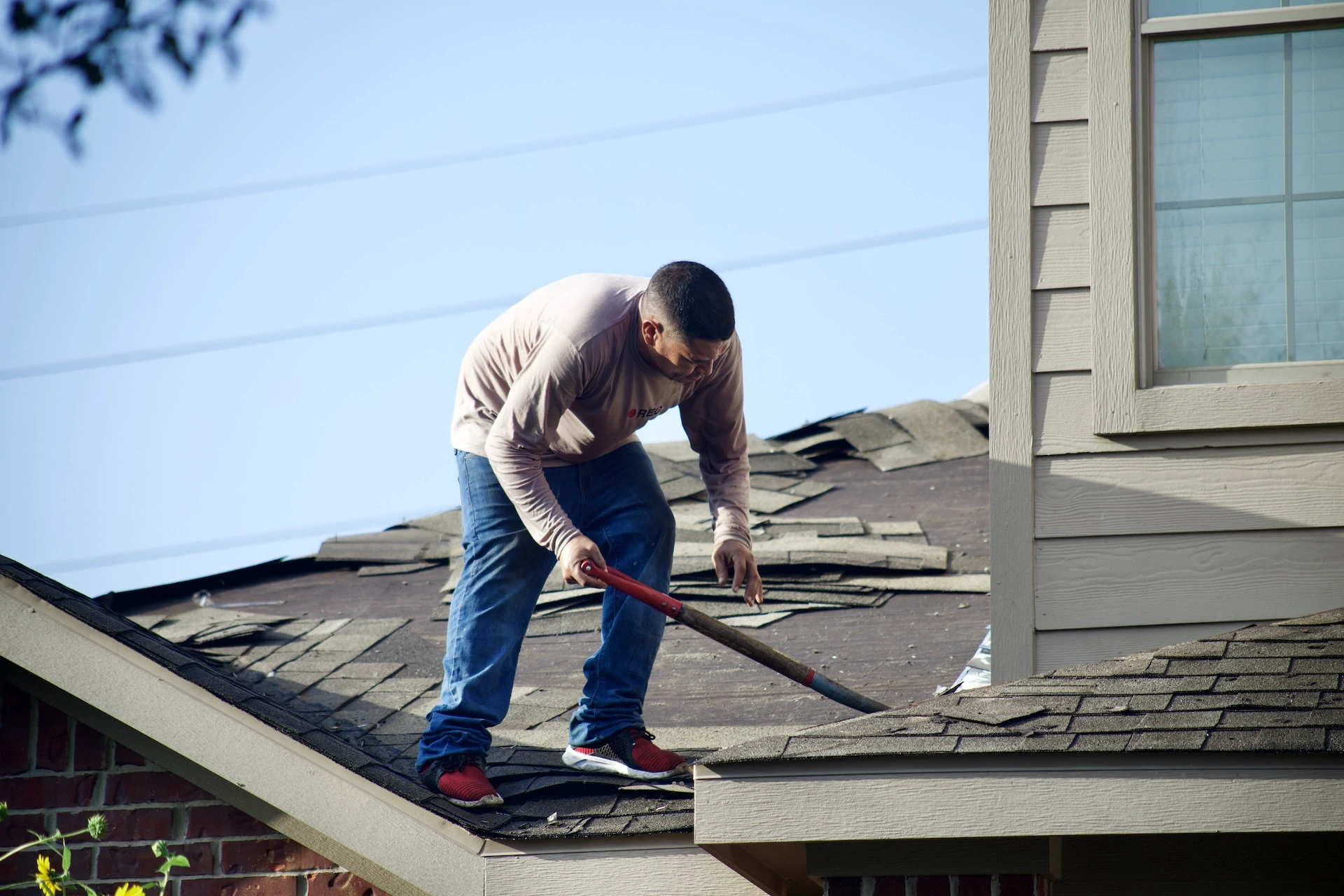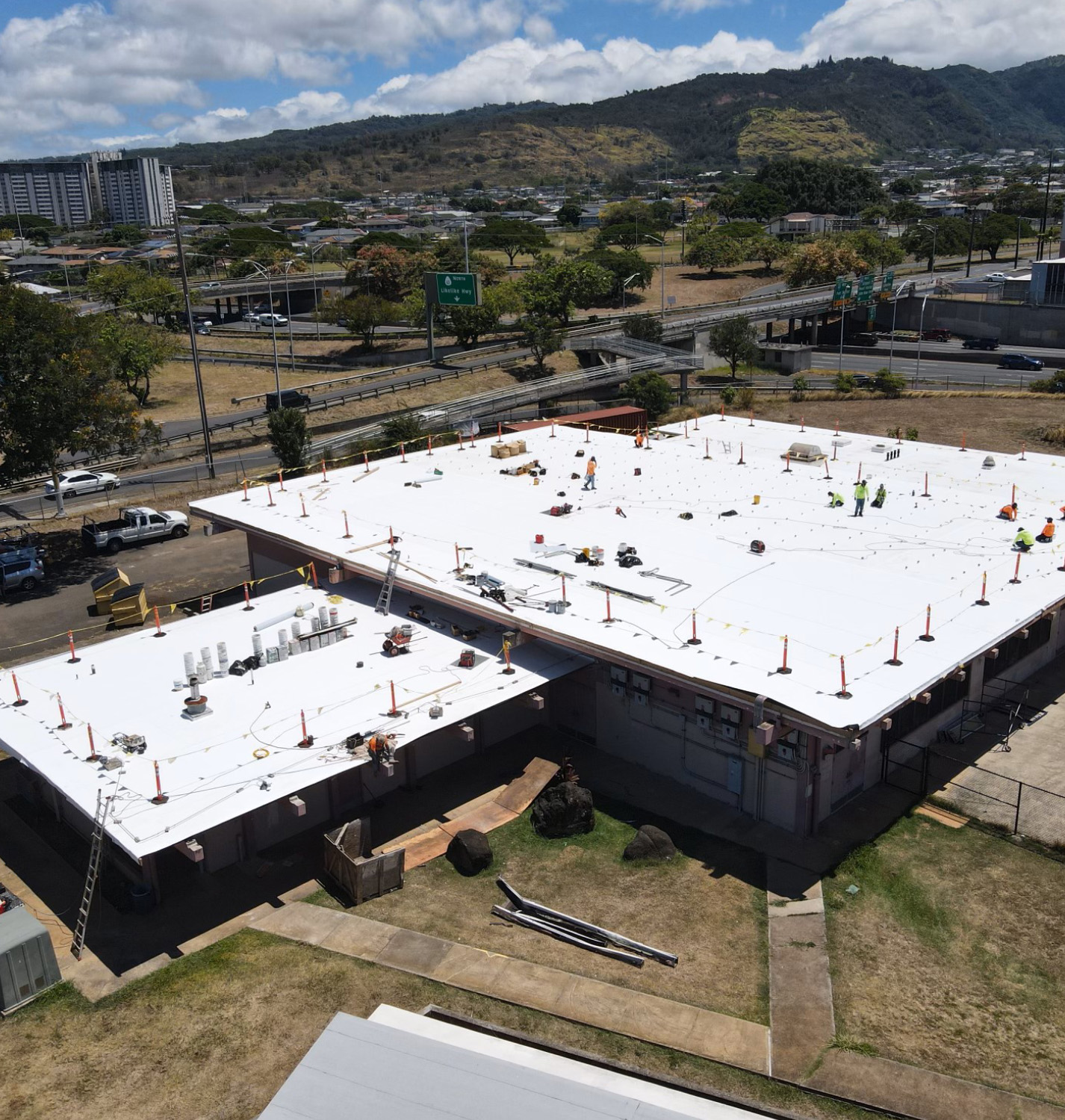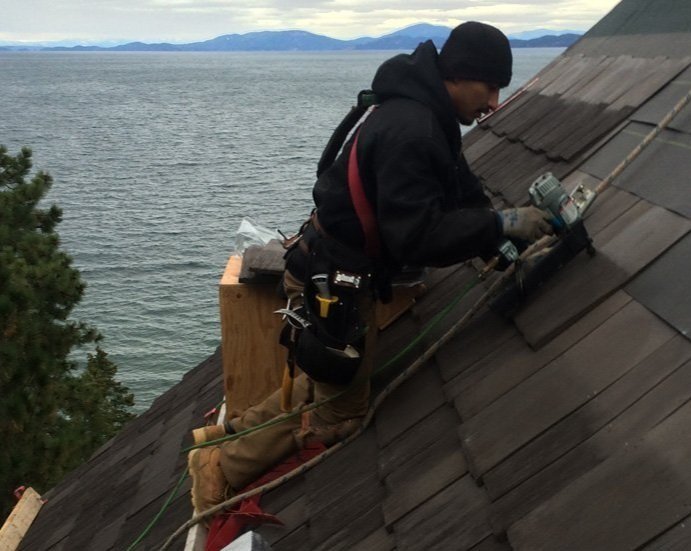Homeowners looking to renovate often start by exploring roofing honolulu hi options.
Homeowners looking to renovate often start by exploring roofing honolulu hi options.
Blog Article
Uncover Usual Roof Covering Issues and Just How to Address Them Properly
When it comes to your roofing system, finding troubles early can save you time and cash. What specific actions should you take to ensure your roof covering stays in leading condition?
Identifying Roofing Leakages and Their Reasons

Following, analyze your roof covering from the exterior. Search for missing or cracked floor tiles, rusted blinking, or damaged seamless gutters. Pay attention to areas around smokeshafts, vents, and skylights, as these prevail leak sources. If you find any of these problems, it's important to address them quickly.
Throughout heavy rainfall, observe your roof for any kind of pooling water or drips. This can disclose leakages that may not show up throughout dry problems. By staying cautious and frequently inspecting your roof covering, you can catch leakages early and safeguard your home from further damages.
Dealing With Missing Out On or Harmed Tiles
When you discover missing out on or harmed shingles, it's vital to act promptly to avoid more problems. You'll intend to recognize the extent of the damage, repair any kind of missing tiles, and consider precautionary upkeep tips to maintain your roof in top shape. Taking these steps can save you time and cash later on.
Determining Roof Shingles Damage
Although roof shingles are developed to withstand the components, they can still suffer damage over time, leading to possible leakages and costly repairs. To determine roof shingles damage, beginning by checking your roofing for missing out on, broken, or crinkled roof shingles. Frequently monitoring your roof covering, specifically after serious climate, can help you capture issues early and keep the stability of your home.
Repairing Missing Tiles
After spotting tile damages, the next step is resolving any type of missing out on or damaged roof shingles immediately to avoid further problems. Begin by evaluating the damaged area and determining how lots of tiles require substitute. If you can, climb up onto your roofing system safely, putting on appropriate gear. Eliminate any broken tiles carefully using a pry bar. As soon as you've removed the location, slide in the brand-new tiles, ensuring they line up with the existing ones. Protect them with roof nails and apply roof covering adhesive for added security. Do not neglect to seal the edges to stop water seepage. If you're uneasy with the repair service, it's important to call a professional. Doing something about it rapidly will help keep your roofing's integrity and expand its life-span.
Preventive Upkeep Tips
How can you maintain your roofing in leading shape and protect against roof shingles from going missing out on or obtaining damaged? Normal assessments are essential. Check your roof covering at least two times a year and after serious weather condition. Look for indicators of wear, such as curling, splitting, or loose shingles.
Maintain seamless gutters tidy and cost-free of debris to assure proper water circulation and stop shingle damages. Trim overhanging branches to reduce the risk of them scratching versus your roofing system during tornados.
Think about applying a safety sealant to prolong your tiles' lifespan. If you discover any kind of issues, resolve them quickly to prevent pricey fixings later on. Taking these safety nets can conserve you time and money while guaranteeing your roof continues to be resilient and reputable.
Recognizing Roof Ventilation Issues
Appropriate roofing air flow is essential for preserving the durability and effectiveness of your roof, as it aids regulate temperature and moisture degrees in your attic. Without adequate ventilation, you might face issues like extreme warmth accumulation, causing early roof shingles deterioration, or increased moisture that can create mold and mildew development and timber rot.
To examine your roof covering air flow, look for indications of getting too hot, such as distorted roof shingles or a hot attic room. Look for obstructed vents, which can limit air flow and trap warmth. You should assure your consumption and exhaust vents are balanced, enabling correct air exchange.
Dealing with these issues immediately can protect your roof covering and conserve you from costly fixings down the line. Remain aggressive in preserving your roofing system's air flow to safeguard your home.
Addressing Roof Covering Moss and Algae Development
While you might value the all-natural appearance of moss and algae on your roofing system, these microorganisms can lead to considerable issues if left unchecked. Use a soft-bristle brush to delicately scrub away the moss and algae, being mindful not to harm your shingles.
Next, consider applying a specialized roofing cleaner or a mixture of water and bleach to kill remaining spores. Normal examinations and maintenance will certainly aid prevent moss and algae from returning, guaranteeing your roof continues to be in excellent shape for years to come.
Fixing Tornado Damage and Wind Problems
After a tornado, it's essential to examine your roofing system for damage created by high winds and heavy rain. Beginning by inspecting for missing or damaged roof shingles, as these are common casualties.
Search for any type of sagging areas, which may indicate water buildup or structural issues. If you discover any particles, like branches or leaves, remove them carefully to stay clear of additional damage. If your rain gutters are obstructed, clear them to ensure proper water drainage.

For little repairs, you may handle it yourself, yet do not be reluctant to call a professional for comprehensive damage. Keep in mind, acting quickly can save you from larger issues down the line, so take that analysis seriously and deal with any type of problems asap.
Identifying Indicators of Architectural Damages
Just how can you tell if your roof covering is struggling with architectural damage? Begin by looking for visible sagging or dips in your roofline. These indications show that the underlying framework may be compromised. Next, check for fractures or voids in the walls or ceiling, as these can indicate moving or resolving as a result of roofing system concerns. Focus on leakages or water discolorations, specifically in areas where the roofing fulfills wall surfaces. If you observe missing out on or damaged shingles, it's necessary to address them swiftly, look at this web-site as they can subject your roof covering to further damages. Additionally, evaluate your attic room for any indications of daylight looking through, which could suggest your roofing system's integrity goes to danger. Ultimately, pay attention for uncommon creaking or popping audios, as they may indicate structural anxiety. If you see any one of these indicators, it's time to consult a roof covering expert for a complete evaluation.
Routine Upkeep Tips for Longevity

Routine Examinations Relevance
Given that a roof is your home's first line of protection against the elements, routine examinations are necessary for maintaining its honesty. You need to examine your roof covering at the very least twice a year, preferably in springtime and autumn, to capture potential issues early. Keeping up with these assessments can stop expensive fixings down the line and extend your roof's life-span, ensuring your home continues to be safe and sound for years to come.
Proper Gutter Maintenance
Routine roof inspections normally lead index to the relevance of appropriate rain gutter maintenance. Inspect your seamless gutters for leakages or rust; they can cause water damages to your roof and home. By following these tips, you'll prolong your rain gutters' lifespan and shield your roofing.
Often Asked Inquiries
Exactly How Can I Choose the Right Roof Covering Material for My Home?
To choose the right roofing material for your home, take into consideration climate, toughness, and appearances. Research study options like asphalt tiles, metal, or tile. Consider upkeep needs and spending plan to locate what suits you ideal.
What Are the Signs I Required a Roof Covering Replacement As Opposed To Repair Work?
If you see widespread leakages, drooping, or missing out on roof shingles, you could need a roof substitute. If your roofing's nearing its lifespan or has considerable damages, it's time to contemplate a full substitute instead of just repair services.
Just how Frequently Should I Arrange Professional Roofing Examinations?
You should schedule expert roof covering evaluations at the very least as soon as a year, ideally in spring or autumn. This aids catch potential problems early, ensuring your roofing continues to be in good condition and extending its life expectancy.
Can I Set Up a New Roof Covering Over My Old One?
You can install a new roofing system over your old one, however it's important to examine local building regulations and guarantee the existing roofing system's condition is sound. This technique can conserve money and time, however think about prospective difficulties.
What Is the Average Life-span of Various Roof Covering Products?
The standard life-span differs by material: asphalt roof shingles view publisher site last 15-30 years, metal roofs can last 40-70 years, while tile or slate roofing systems may exceed half a century. Choose intelligently based on your environment and budget plan.
Conclusion
By remaining alert and attending to typical roofing problems promptly, you can safeguard your home and prolong your roofing's life expectancy. On a regular basis examine for leaks, harmed roof shingles, and ventilation concerns, and deal with moss or algae growth before it gets worse - roofers oahu. After tornados, check for any damage and make essential fixings. With a little regular maintenance, you'll not just safeguard your investment however likewise delight in peace of mind recognizing your roof remains in top form. Don't wait-- act now!
Report this page